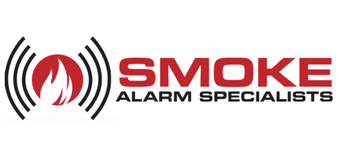Growing City, Growing Density – Shrinking Fire Safety
Melbourne is big and getting bigger. We are told it’s set to speed up further still. In fact, by some measures, we have already overtaken Sydney.
The prohibitive cost of infrastructure to support the urban sprawl has more recently resulted in urban planning authorities encouraging higher density living. As Australians, we are used to a high standard of living. However higher density lifestyles do come with downsides and can place a damper on that standard of living.

Higher density lifestyles do come with downsides, and increased risk of fire.
Today we are living closer together, often in homes constructed of lighter materials than those built for generations prior. Add in the greater presence of more flammable materials within our home furnishings, we have a greater risk on our hands from a fire evacuation perspective. Particularly with townhouse design styles.
As confronting as this may be, the importance of maintaining our standard of living as it grows should not be overlooked; Melbourne’s growth should not come at the expense of lives.
Our changing approach to construction and contemporary furnishings is creating risks to the safety of Melburnians in their own homes.
In Your Neighbourhood and Mine
Old established suburbs and new estates have townhouse-style residences being erected at a rapid rate.
These new dwelling styles stand out to me, and not in a good way. I have spent hundreds of hours in these premises, educating residents on emergency evacuation based on the floor plan of each property. The most common residences have the sleeping quarters upstairs.
While having bedrooms upstairs makes sense in many practical ways, it is far from ideal from a fire safety point of view. Should a fire break out overnight, there is increased danger for sleeping occupants.
Stairs and their location are also significant from a fire safety perspective. Some stairs are at the front door, and some at the back. Many are somewhere in between. Wherever they are, they’re often an afterthought in the design process but are foremost when a fire occurs and escape is paramount.
The most dangerous fire scenario
Most households are not aware of the most dangerous domestic fire scenario. This is the slow-burning, smouldering fire, which occurs in the middle of the night and results in a blackout. Should this occur in a townhouse, the risks are magnified due to occupants located upstairs.
The increased risk is easier to grasp when you imagine yourself an occupant. It’s 3 am, you’re in a deep sleep, and suddenly awoken by the smoke alarm outside your bedroom door. As you wake up, you become aware of the odour of smoke. You reach for your bedside lamp switch only to find the house has no power. No lights. The fire has cut your mains or triggered your safety switch. You now have to escape a dark, smouldering, smoky home.
As you try to grasp the reality of the situation ask yourself…
What do I do now?
Who else is asleep upstairs?
Are they able bodied or do they have special needs?
Where is the source of the fire?
Is it safe to evacuate down the stairs?
Do I have a torch?
What are my evacuation options out of windows upstairs?
Do the windows need to be broken?
Where does the window lead?
The decisions you make are vital – and they are measured in minutes.
We Must Build on the Past, Not Ignore It
As our cities become increasingly concentrated it is essential that those involved with building, planning and design remain attuned to the changing needs of our growing city. Vanessa Bird of the Australian Institute of Architects recently stated, “Ensuring public safety in the built environment is the chief priority of the architectural profession”. Rightly so, and this should extend to high volume housing.
Rapid growth like we see here in Melbourne can be accommodated, but without better community awareness and education it will come at a price. Particularly from a fire safety perspective, we need townhouses better designed and occupants much better informed on risks and evacuation measures.
Alarmingly, many residents seem unaware of the specific fire-related dangers that are associated with their home. Importantly, once they understand how to cater for the unique needs of their family and floor plan, they feel both comforted and empowered in the event of a future fire incident.
Conclusion
Let’s ensure that Melbourne grows in the safest way possible.
Right now we do not have the right balance between construction, public safety, and consumer education. I detailed this previously in my first blog on the Airbnb issue, and it remains a multi-faceted problem.
This is an issue I intend to keep talking about in future blog posts to follow.
Jamie Bowman
The Smoke Alarm Guy
About Jamie: Jamie Bowman is a founder and manager of Smoke Alarm Specialists in Melbourne, Australia. He founded SAS in 2008 alongside his wife Di, and holds over 10,000 hours experience with household occupants, in the unique combination of fire safety education and residential rental property across Melbourne’s booming metropolitan east.
Jamie is always happy to connect with readers, and can be contacted via jamie@smokealarmspecialists.com.au and also found on LinkedIn.



